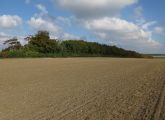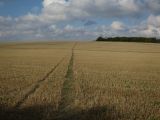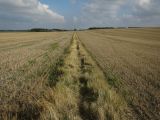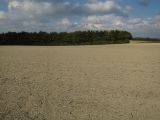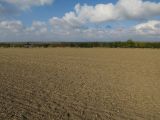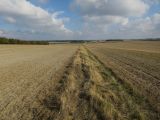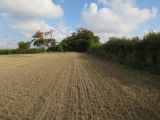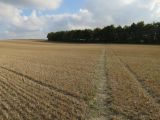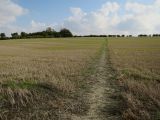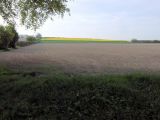Limlow Hill (Litlington): Difference between revisions
m (→Maps) |
rh>Henryfunk mNo edit summary |
||
| Line 34: | Line 34: | ||
* [http://www.pastscape.org.uk/hob.aspx?hob_id=368685&sort=2&type=hillfort&rational=a&class1=None&period=None&county=None&district=None&parish=None&place=&recordsperpage=10&source=text&rtype=&rnumber=&p=3&move=p&nor=890&recfc=0#aRt Past Scape: Limlow Hill Mound] (on archaeological finds and excavations). | * [http://www.pastscape.org.uk/hob.aspx?hob_id=368685&sort=2&type=hillfort&rational=a&class1=None&period=None&county=None&district=None&parish=None&place=&recordsperpage=10&source=text&rtype=&rnumber=&p=3&move=p&nor=890&recfc=0#aRt Past Scape: Limlow Hill Mound] (on archaeological finds and excavations). | ||
{{PnItemAlsoSee}} | {{PnItemAlsoSee}} | ||
== Notes == | == Notes == | ||
<references/> | <references/> | ||
</div> | |||
<div id="gallery"> | |||
< | |||
{{ImgGalleryIntro}} | {{ImgGalleryIntro}} | ||
<gallery widths="195px"> | <gallery widths="195px"> | ||
| Line 53: | Line 52: | ||
File:Looking towards Limlow Hill.jpg|Looking towards Limlow Hill / [https://www.geograph.org.uk/photo/408981 Jeff Tomlinson, 22 Apr. 2007, Creative Commons, via Geograph.] | File:Looking towards Limlow Hill.jpg|Looking towards Limlow Hill / [https://www.geograph.org.uk/photo/408981 Jeff Tomlinson, 22 Apr. 2007, Creative Commons, via Geograph.] | ||
</gallery> | </gallery> | ||
</div> | |||
{{PnItemNav}} | {{PnItemNav}} | ||
Revision as of 17:53, 15 May 2020
[[File:|thumb|right|500px|Limlow Hill / Hugh Venables, 23 Oct., 2016, Creative Commons, via Geograph.]]
By Henrik Thiil Nielsen, 2013-08-07. Revised by 18.190.152.38, 2020-05-15.
Just south of Litlington village, east of the road to Royston, is Limlow Hill, which was formerly crowned by a tumulus c. 5.5 m high and c. 13 m in diameter, surrounded by a ditch and bank. In 1888 or 1892[1] this prominent landmark was destroyed and leveled by the farmer on whose field it was situated. According to local tradition, Robin Hood, standing on the mound, shot an arrow which either fell in Litlington Chalk Pit c. 700 metres away, where it was said to have subsequently grown into a thorn tree, or fell on Ermine Street c. 2.5 km away. The tradition was supposedly commemorated in the name of the Robin Hood & Little John inn in Litlington, which was established by 1811 and closed in 1910. It is hardly possible to say how much older this tradition may be. Skeletons with Roman paraphernalia and coins were found in or near the mound in 1833. Following aerial photography in 1934, what remained of the site after the fatal event of c. 1894 was excavated in 1937. The mound and an enclosure within which it was located were then dated to c. 150-200 AD. The area is currently cultivated.
Quotations
The "Limbury" Tumulus, near Litlington, Cambs. — On a hill to the south of the village of Litlington, Cambs. [sic] there used to be a large tumulus called Limbury or Linloe Hill. A local tradition related that from it Robin Hood shot an arrow which fell on the Ermine Street, near where the toll gate used to stand, about a mile and a half away, a spot now marked by an ancient hawthorn bush, and on the Ordnance map as "Robin Hood." Having often seen this tumulus when travelling along the railway, I paid a visit to it about two years ago, and on arriving at the top of the hill was surprised to find that the tumulus had vanished, but in place of it about half an acre of the adjoining arable land was covered with chalk, bones, and broken pottery, evidently Roman. Amongst the bones I found a remarkable perfect epiphysis from the lower end of the femur of a deer. Coins of the reigns of Vespasian and Claudius have been found here, and about half a mile south near Ashwell Street, a Roman cemetery was discovered in 1821. Is an occupier, or owner of land, allowed to destroy ancient landmarks like this with impunity?[2]
One source [sc. Courcy-Ireland[3]] says that the arrow fell in the village chalk pit (now disused, [...] a few hundred metres across the road from the hill), and there grew into a thorn tree. By 1811 an inn (which closed in 1910) in the village had been named the Robin Hood & Little John, supposedly after this legend.[4]
Gazetteers
- Not included in Dobson, R. B., ed.; Taylor, J., ed. Rymes of Robyn Hood: an Introduction to the English Outlaw (London, 1976), pp. 293-311.
Sources
- Courcy-Ireland, Magens de. History of Abington Pigotts with Litlington: Churches & Parishes, with the Manors (Royston, 1944), p. 48. Not seen.
- Hidden East Anglia - Litlington
- Palmer, W.M. 'The "Limbury" Tumulus, near Litlington, Cambs.', The East Anglian, or, Notes & Queries on Subjects Connected with the Counties of Suffolk, Essex, Cambridge, and Notfolk, New Series, vol. VI (1895-96), p. 28
- Reaney, P.H. The Place-Names of Cambridgeshire and the Isle of Ely (English Place-Name Society, vol. XIX) (Cambridge, 1943), p. 57, s.n. 'Limlow Hill'.
Maps
- 25" O.S. map Cambridgeshire LVII.8 (1887; surveyed 1886). No Copy in NLS
- 25" O.S. map Cambridgeshire LVII.12 (1903; rev. 1901) (georeferenced)
- 25" O.S. map Cambridgeshire LVII.12 (1903; rev. 1901)
- 6" O.S. map Cambridgeshire LVII.SE (1886; surveyed 1877)
- 6" O.S. map Cambridgeshire LVII.SE (1903; rev. 1901) (georeferenced)
- 6" O.S. map Cambridgeshire LVII.SE (1947; rev. c. 1950)
- 1:25,000 O.S. map TL34 (1956; surveyed 1937-53)
- 1" O.S. map sheet 204 Biggleswade (Hills) (1896)
- 1" O.S. map 147 Bedford & Luton (1946)
- 1" O.S. map 147 Bedford and Luton (1959).
Discussion
- British History Online: Litlington; web edition of: 'Parishes: Litlington', in: A History of the County of Cambridge and the Isle of Ely, vol. 8 (1982), pp. 54-66.
- Past Scape: Limlow Hill Mound (on archaeological finds and excavations).
Notes
- ↑ Reaney, P.H. The Place-Names of Cambridgeshire and the Isle of Ely (English Place-Name Society, vol. XIX) (Cambridge, 1943), p. 57, s.n. 'Limlow Hill'.
- ↑ Palmer, W.M. 'The "Limbury" Tumulus, near Litlington, Cambs.', The East Anglian, or, Notes & Queries on Subjects Connected with the Counties of Suffolk, Essex, Cambridge, and Notfolk, New Series, vol. VI (1895-96), p. 28.
- ↑ Courcy-Ireland, Magens de. History of Abington Pigotts with Litlington: Churches & Parishes, with the Manors (Royston, 1944), p. 48. Not seen.
- ↑ Hidden East Anglia - Litlington.
Footpath up Limlow Hill / Hugh Venables, 23 Oct., 2016, Creative Commons, via Geograph.
Field boundary on Limlow Hill / Hugh Venables, 23 Oct., 2016, Creative Commons, via Geograph.
Footpath to Limlow Hill / Hugh Venables, 23 Oct., 2016, Creative Commons, via Geograph.
Footpath on Limlow Hill / Hugh Venables, 23 Oct., 2016, Creative Commons, via Geograph.
Field boundary on Limlow Hill / Hugh Venables, 23 Oct., 2016, Creative Commons, via Geograph.
Footpath from Limlow Hill / Hugh Venables, 23 Oct., 2016, Creative Commons, via Geograph.
Path up Limlow Hill / Hugh Venables, 23 Oct., 2016, Creative Commons, via Geograph.
Looking towards Limlow Hill / Jeff Tomlinson, 22 Apr. 2007, Creative Commons, via Geograph.

